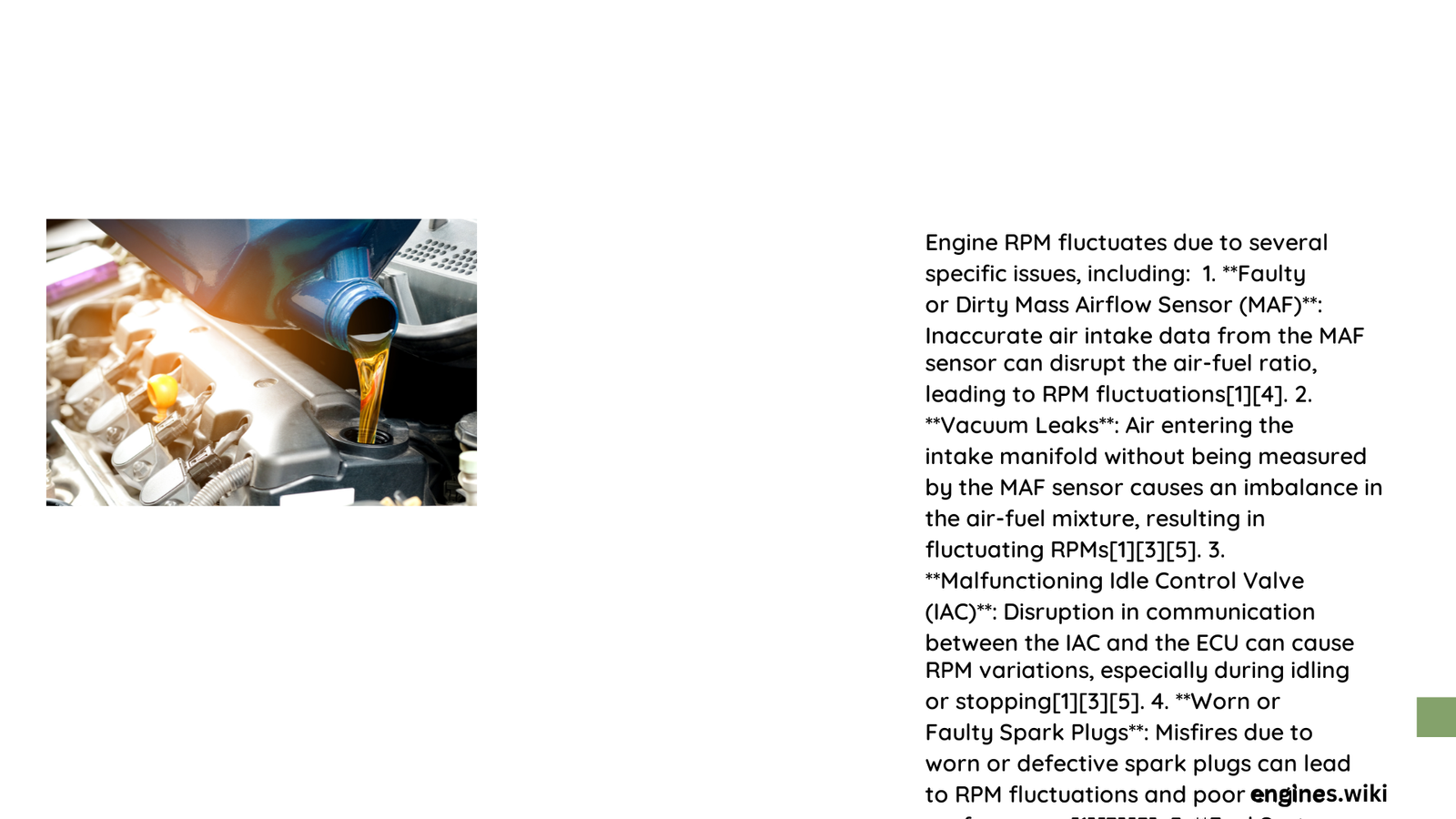Engine RPM fluctuations can be a perplexing and potentially dangerous automotive issue, signaling underlying mechanical or electronic problems. These variations occur when an engine’s rotational speed unexpectedly changes, potentially compromising vehicle performance, fuel efficiency, and overall driving safety. Understanding the root causes is crucial for timely diagnosis and effective resolution.
What Causes Unexpected Engine RPM Changes?
Mechanical Disruptions Behind RPM Instability
How Do Vacuum Leaks Impact Engine Performance?
Vacuum leaks represent a critical mechanical factor in RPM fluctuations. When unmetered air enters the intake manifold, it disrupts the precise air-fuel mixture, causing unpredictable engine behavior. Key indicators include:
- Hissing sounds near intake manifold
- Irregular idle speed
- Potential check engine light activation
| Vacuum Leak Location | Potential Impact | Difficulty of Repair |
|---|---|---|
| Intake Manifold Gasket | High RPM Variation | Moderate |
| Loose Vacuum Hoses | Moderate RPM Changes | Low |
| Cracked Intake Boots | Significant Performance Reduction | High |
Why Do Spark Plugs Contribute to RPM Inconsistency?
Worn or faulty spark plugs can dramatically influence engine RPM by:
– Causing intermittent misfires
– Disrupting consistent fuel combustion
– Creating uneven power delivery
Electronic System Complications
How Do Sensors Affect Engine Stability?
Electronic sensors play a crucial role in maintaining consistent RPM:
- Mass Airflow Sensor (MAF)
- Measures incoming air volume
- Inaccurate readings cause RPM fluctuations
-
Symptoms include jerky acceleration
-
Throttle Position Sensor (TPS)
- Monitors throttle plate position
- Malfunctions lead to unpredictable engine response
- Can trigger check engine warnings
Fuel System Dynamics
What Influences Air-Fuel Mixture Stability?
The ideal air-fuel ratio of 14.7:1 is critical for smooth engine operation. Disruptions can occur through:
– Clogged fuel injectors
– Dirty air filters
– Compromised oxygen sensors
Diagnostic Strategies
How Can You Identify RPM Fluctuation Sources?
Recommended diagnostic approaches include:
– Using OBD2 scanner for error code analysis
– Performing visual inspection of engine components
– Checking sensor voltage with multimeter
– Professional mechanical assessment
Prevention and Maintenance
What Prevents Ongoing RPM Issues?
Regular maintenance strategies:
– Scheduled spark plug replacement
– Periodic sensor cleaning
– Air filter replacement
– Professional engine tune-ups
Technical Insights
Average Idle RPM Range: 600-1000 RPM
Potential Efficiency Loss: Up to 20% with unresolved issues
Diagnostic Tool Cost: $20-$200
Conclusion

Understanding why engine RPM fluctuates requires systematic investigation of mechanical, electronic, and fuel system interactions. Proactive maintenance and timely diagnostics are key to preserving vehicle performance and preventing costly repairs.
